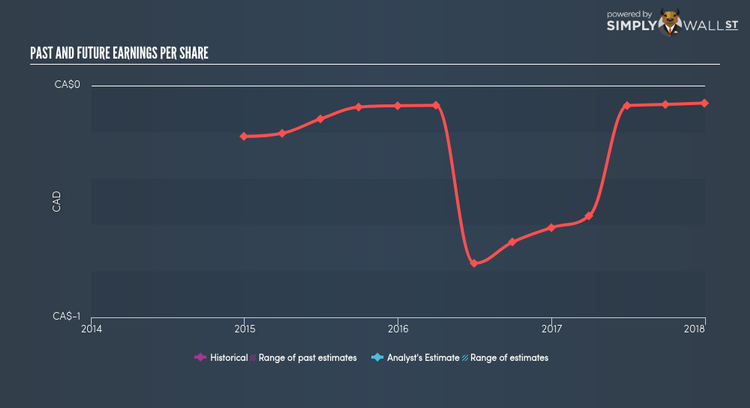Does Ironside Resources Inc’s (CVE:IRC) CEO Salary Compare Well With Others?

Leading Ironside Resources Inc (TSXV:IRC) as the CEO, Dev Randhawa took the company to a valuation of CA$1.20M. Understanding how CEOs are incentivised to run and grow their company is an important aspect of investing in a stock. This is because, if incentives are aligned, more value is created for shareholders which directly impacts your returns as an investor. I will break down Randhawa’s pay and compare this to the company’s performance over the same period, as well as measure it against other Canadian CEOs leading companies of similar size and profitability. Check out our latest analysis for Ironside Resources
What has IRC’s performance been like?
Performance can be measured based on factors such as earnings and total shareholder return (TSR). I believe earnings is a cleaner proxy, since many factors can impact share price, and therefore, TSR. In the past year, IRC released negative earnings of -CA$785.14K . But this is an improvement on prior year’s loss of -CA$5.36M, which may signal a turnaround since IRC has been loss-making for the past five years, on average, with an EPS of -CA$0.50. Since earnings are heading towards the right direction, CEO pay should echo Randhawa’s hard work. Over the same period Randhawa’s total compensation declined by a non-trivial rate of -23.89%, to CA$195.00K.
Is IRC’s CEO overpaid relative to the market?
Despite the fact that one size does not fit all, as remuneration should account for specific factors of the company and market, we can gauge a high-level thresold to see if IRC is an outlier. This exercise can help shareholders ask the right question about Randhawa’s incentive alignment. Typically, a Canadian small-cap is worth around $345M, generates earnings of $24M, and pays its CEO circa $770,000 per annum. Normally I’d use market cap and profit as factors determining performance, however, IRC’s negative earnings lower the effectiveness of this method. Given the range of pay for small-cap executives, it seems like Randhawa is being paid within the bounds of reasonableness. Overall, though IRC is unprofitable, it seems like the CEO’s pay is appropriate.
Next Steps:
You can breathe easy knowing that shareholder funds aren’t being used to overpay IRC’s CEO. However, on the flipside, you should ask whether Randhawa is appropriately remunerated on the basis of retention. Its important for shareholders to be active in voting governance decisions, as board members are only representatives of investors’ voices. If you have not done so already, I highly recommend you to complete your research by taking a look at the following:
Governance: To find out more about IRC’s governance, look through our infographic report of the company’s board and management.
Financial Health: Does it have a healthy balance sheet? Take a look at our free balance sheet analysis with six simple checks on key factors like leverage and risk.
Other High-Growth Alternatives: Are there other high-growth stocks you could be holding instead of IRC? Explore our interactive list of stocks with large growth potential to get an idea of what else is out there you may be missing!
To help readers see pass the short term volatility of the financial market, we aim to bring you a long-term focused research analysis purely driven by fundamental data. Note that our analysis does not factor in the latest price sensitive company announcements.
The author is an independent contributor and at the time of publication had no position in the stocks mentioned.

